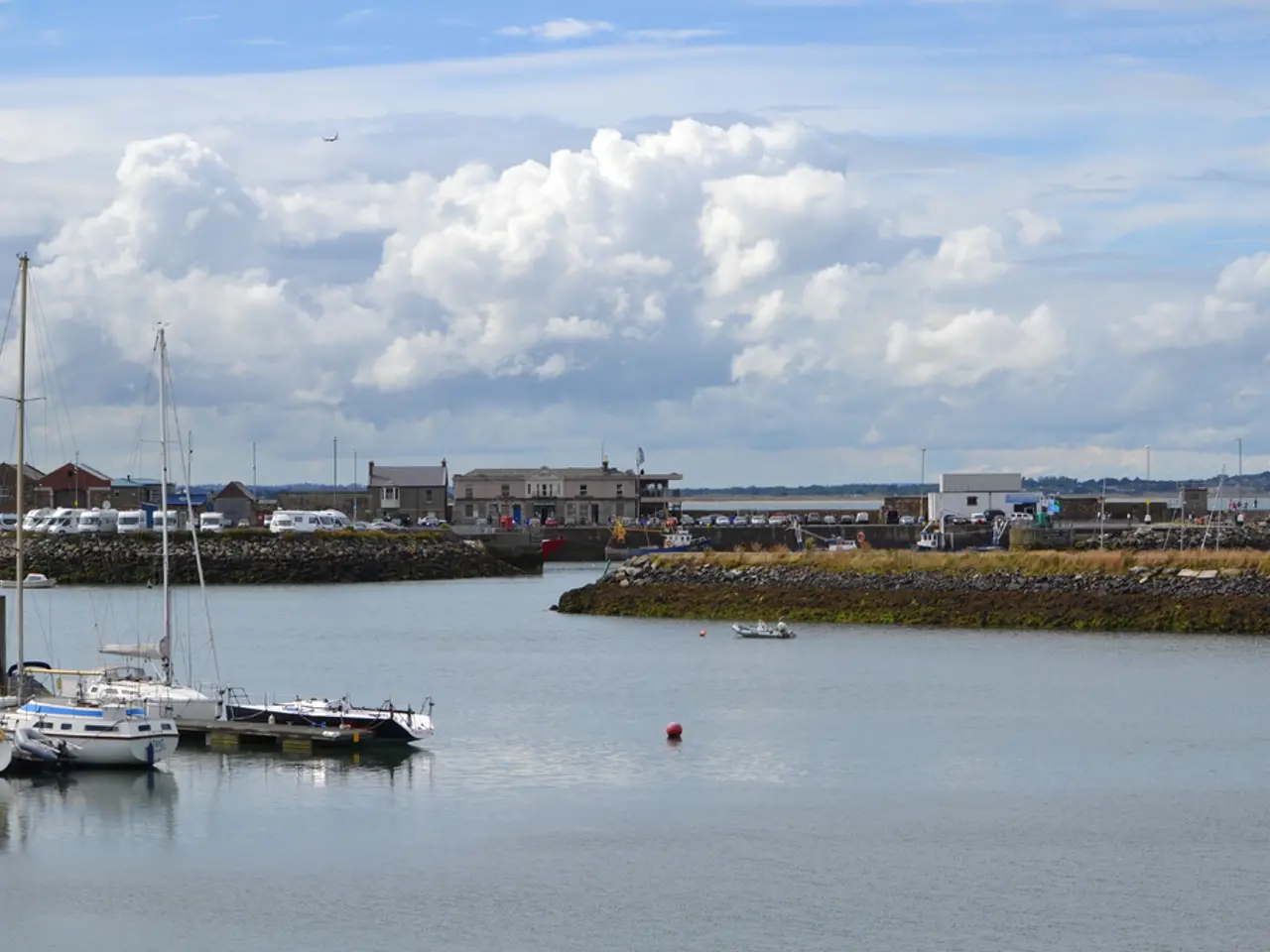Southwestern areas face heightened flood risks according to environmental advocacy groups - South West Region Warned: High Flood Risk Imminent
In response to the increasing frequency of flood events due to climate change, the German Environmental Action (DUH) is advocating for more nature-based solutions in regions with high flood risk indices, such as Baden-Württemberg and Bavaria.
The DUH, based in Berlin, has calculated a flood risk index for the federal states, with Bavaria having the highest index of 8.29, followed closely by Baden-Württemberg with a score of 7.96. These indices imply that these regions are among the areas most at risk.
The urgency of adaptation and precautionary measures is emphasized by Sascha Müller-Kraenner, the Federal Managing Director of DUH, to protect potentially hundreds of thousands of people at risk. In Bavaria, 65,517 addresses could be affected by a century flood, while in Baden-Württemberg, over 54,600 residential addresses could be at risk.
To mitigate flood risk, nature-based solutions can play a significant role. These solutions include:
1. **Wetland Restoration and Preservation**: Wetlands can act as natural buffers, absorbing excess water during floods and reducing the impact of floodwaters on populated areas. Restoring and preserving wetlands can also improve biodiversity, providing habitats for various species.
2. **Reforestation and Rainwater Infiltration**: Reforestation in upstream areas can enhance soil's ability to absorb rainwater, reducing runoff into rivers and thus lowering the risk of downstream flooding. Improving rainwater infiltration through measures like permeable surfaces can further reduce runoff.
3. **Green Embankments and Natural Flood Defenses**: Using green embankments, which are covered with vegetation, can provide a sustainable alternative to traditional concrete structures. Dynamic rock or grass cover can stabilize embankments without the need for concrete, making them more adaptable and cost-effective.
4. **Room for the River Concept**: This concept involves giving rivers more space to flow naturally, which can reduce flood risks by allowing rivers to carry more water during peak flows.
5. **Small Flood Reservoirs**: Small flood reservoirs can be used to manage water during floods, storing excess water temporarily and releasing it when the flood peak has passed. They also offer dual benefits by providing water storage during droughts, making them a sustainable solution for water management.
By combining these nature-based solutions with structural measures like dykes, as seen in cities like Hamburg, integrated approaches can enhance resilience to flooding. Considering the interconnectedness of river basins and coastal areas is crucial for comprehensive flood risk management.
Nature-based solutions can help adapt to the changing climate by providing natural buffers against extreme weather events, supporting biodiversity, and reducing the economic and environmental costs associated with traditional flood defense methods.
The German Environmental Action (DUH) recommends incorporating environmental-science approaches such as wetland restoration, reforestation, and the creation of small flood reservoirs, into community policy to help combat flood risk and mitigate climate-change impacts. By applying science-based vocational training programs in these areas, we can ensure a workforce equipped to implement and maintain these nature-based solutions effectively.







